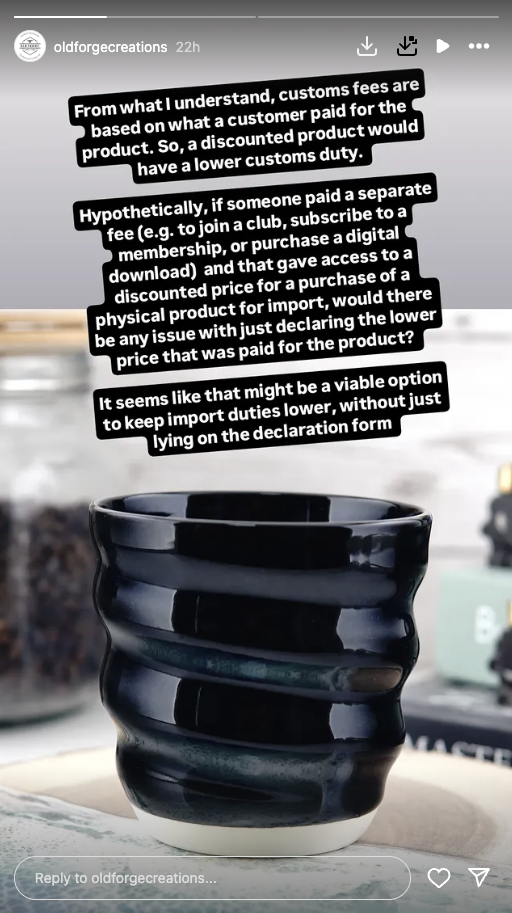
When Trump first suspended the $800 de minimis threshold, one of our Shopify merchants shared an Instagram Story with us and asked if the "creative" workaround mentioned would work. (See screenshot below.)
I did some research and recommended more legitimate approaches instead. While here in Australia we've been able to avoid the higher tariffs that many other countries face, I wanted to write this blog post anyway as we also serve Shopify merchants in other regions.
Important note: This blog post isn't a comprehensive guide to US customs regulations. Every merchant's situation is different, and you should do your own research before making any business decisions. Instead, I want to share why the "creative" solutions being shared on social media could cause problems for your business, and offer some legitimate, safer alternatives that actually work.

The US used to have one of the world's highest de minimis thresholds at $800 USD, which makes it an attractive market for international merchants. For context, other major markets have much lower thresholds:
That $800 threshold meant most international shipments to the US used to enter duty-free, making America one of the most accessible international markets for e-commerce brands.
So what happens now, after President Trump signed an executive order suspending the $800 de minimis threshold for ALL countries starting on August 29th, 2025?
This means every shipment to the US now faces tariffs regardless of value, and that's where some merchants start getting "creative" with their workarounds.
Just a quick note for fellow Aussies reading this blog post - at the time of writing (August 2nd, 2025), Trump personally ensured Australia’s tariff rate would remain at a 10% baseline tariff on all US shipments regardless of value.
The Instagram Story which one of our Shopify merchants shared with us suggested e-commerce brands could structure transactions as "memberships" or "digital access fees", combined with heavily discounted physical products to stay under the US de minimis threshold.
This is their theory: Charge customers $200 for a "membership" or "digital subscription," then sell a $1,000 physical product for $300. Declare only the $300 product value to US customs, staying well under the $800 threshold.
Why this approach creates serious risks for US market entry:
Instead of trying to game the $800 threshold, consider these legitimate approaches:
If you're running international pre-order campaigns targeting US customers, customs compliance becomes critical because:
The most successful US pre-order campaigns we see from international merchants include total delivered cost estimates upfront, even for orders that might exceed $800.
For serious US market expansion, consult with:
The risky schemes circulating on social media aren't worth the potential consequences. The US market's $800 de minimis threshold is already generous compared to other countries - there's no need to manipulate the system.
Instead of following questionable advice from social media posts:
Whether you're shipping from Australia, Europe, Asia, or anywhere else, sustainable success in the US market comes from understanding the rules and building your business accordingly - not from trying to circumvent them with creative accounting schemes.
Disclaimer: This post is a response to risky workarounds being discussed on social media and is not intended as comprehensive customs or legal advice. US customs regulations are complex and change frequently. This blog post should not be your only source of information - always do your own research using official CBP resources and consult with qualified customs professionals familiar with your specific situation before making any business decisions.